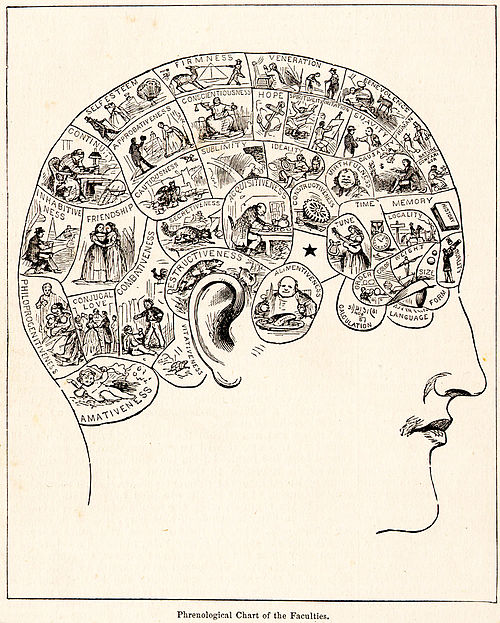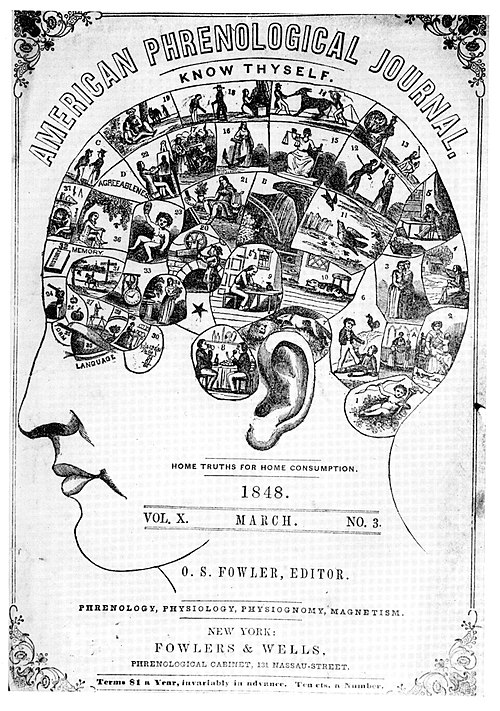Cranioscopynoun
(rare) The study of the shape, size, and other features of the human skull.
Cranioscopynoun
(dated) Phrenology.
Cranioscopynoun
Scientific examination of the cranium.
Cranioscopy
Cranioscopy is a term created by Franz Joseph Gall (1758–1828), a German neuroanatomist and physiologist who was a pioneer in the study of the localization of mental functions in the brain, to name his technique to infer localization of function in the brain on the basis of the external anatomy of the skull or cranium. Cranioscopy is the basis of phrenology, but was later proved to be unscientific.
Phrenologynoun
The science, now generally discredited, which studies the relationships between a person's character and the morphology (structure) of the skull.
Phrenologynoun
The science of the special functions of the several parts of the brain, or of the supposed connection between the various faculties of the mind and particular organs in the brain.
Phrenologynoun
In popular usage, the physiological hypothesis of Gall, that the mental faculties, and traits of character, are shown on the surface of the head or skull; craniology.
Phrenologynoun
a now abandoned study of the shape of skull as indicative of the strengths of different faculties
Phrenology
Phrenology (from Ancient Greek φρήν (phrēn) 'mind', and λόγος (logos) 'knowledge') is a pseudoscience which involves the measurement of bumps on the skull to predict mental traits. It is based on the concept that the brain is the organ of the mind, and that certain brain areas have localized, specific functions or modules.





